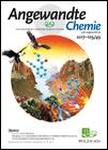版权所有:内蒙古大学图书馆 技术提供:维普资讯• 智图
内蒙古自治区呼和浩特市赛罕区大学西街235号 邮编: 010021

作者机构:Key Laboratory of Functional Polymer Materials of the Ministry of Education Institute of Polymer Chemistry College of Chemistry Nankai University Tianjin 300071 P. R. China Materials Chemistry and Nanochemistry Research Group Solar Fuels Cluster Centre for Inorganic and Polymeric Nanomaterials Departments of Chemistry Chemical Engineering and Applied Chemistry and Electrical and Computing Engineering University of Toronto 80 St. George Street Toronto Ontario M5S3H6 Canada Institute of Functional Nano & Soft Materials Soochow University Suzhou Jiangsu 215123 P. R. China State Key Laboratory of Coal Conversion Institute of Coal Chemistry The Chinese Academy of Sciences Taiyuan 030001 China Department of Physics Temple University Philadelphia PA 19122 USA Condensed Matter Physics and Materials Science Department Brookhaven National Laboratory Upton NY 11973 USA College of Chemistry and Chemical Engineering Northwest Normal University Lanzhou 730070 P. R. China Department of Materials and Environmental Chemistry Stockholm University 10691 Stockholm Sweden School of Materials Science and Engineering UNSW Australia Kensington Campus Building E10 Sydney NSW 2052 Australia
出 版 物:《Angewandte Chemie》
年 卷 期:2018年第130卷第38期
学科分类:081704[工学-应用化学] 08[工学] 0817[工学-化学工程与技术]
主 题:Elektrokatalyse Funktionalisierung Polymere ionische Flüssigkeiten Poröse Kohlenstoffmembranen Stickstoff-Fixierung
摘 要:Ammonia, a key precursor for fertilizer production, convenient hydrogen carrier, and emerging clean fuel, plays a pivotal role in sustaining life on Earth. Currently, the main route for NH 3 synthesis is by the heterogeneous catalytic Haber–Bosch process (N 2 +3 H 2 →2 NH 3 ), which proceeds under extreme conditions of temperature and pressure with a very large carbon footprint. Herein we report that a pristine nitrogen‐doped nanoporous graphitic carbon membrane (NCM) can electrochemically convert N 2 into NH 3 in an acidic aqueous solution under ambient conditions. The Faradaic efficiency and rate of production of NH 3 on the NCM electrode reach 5.2 % and 0.08 g m −2 h −1 , respectively. Functionalization of the NCM with Au nanoparticles dramatically enhances these performance metrics to 22 % and 0.36 g m −2 h −1 , respectively. As this system offers the potential to be scaled to industrial levels it is highly likely that it might displace the century‐old Haber–Bosch process.